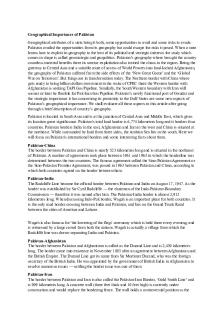Wildlife of Pakistan Mar 2012 PDF

| Title | Wildlife of Pakistan Mar 2012 |
|---|---|
| Author | Ayoub Baloch |
| Course | Zoology |
| Institution | Ghazni University |
| Pages | 62 |
| File Size | 6.6 MB |
| File Type | |
| Total Downloads | 78 |
| Total Views | 139 |
Summary
Download Wildlife of Pakistan Mar 2012 PDF
Description
Chief Editor:
Z. B. Mirza
Editor:
Waseem Ahmad Khan
Editorial Board:
Grace M. Yoxon Saeed Akhtar Baloach Mohammad Naeem Bhatti Mohammad Javaid Ayub Nazish Mazhar Ali Naureen Mumtaz Safwan Shahab Ahmad
Publisher:
Pakistan Wildlife Foundation Basement Baloachistan Plaza, Fazal-ul-Haq Road, Blue Area, Islamabad, Pakistan Email: [email protected] Website: www.pakwildlife.org
Registration No.
25001 - Copr Intellectual Property Organisation, Government of Pakistan
ISSN
2227-1813
Printer:
Vision Graphics Blue Area, Islamabad. 0301-5538710
Volume 1: Issue 1: January - March, 2012
CONTENTS 03│Editorial 04│What is Wildlife 06│Understaning the Snakes
WILDLIFE OF PAKISTAN
11│National Parks in Pakistan
2
14│Wildlife and parks department - Punjab 18│An Introduction to Biodiversity of Gilgit-Baltistan 21│IUCN Threatened Categories 26│Pitcherirrigation;EfficientAgriculturefor Food Security and Nature Conservation 28│Mud Volcanoes of Pakistan 30│Role of Children in Wildlife Conservation 32│Musk Deer in Kashmir 35│Biological Control in the Context of Insect Biodiversity 36│Barn Owl: a Friend of Farmers 37│Conservation awareness of Margallah Hills National park: a success story 39│Wildlife Photography 41│Wildlife News 45│About Pakistan Wildlife Foundation 49│Announcements 60│Acknowledgments
Crested Lark (Galerida cristata) © Waseem Ahmad Khan, PWF CoverPhoto:CommonKingfisher(Alcedo atthis) © Waseem Ahmad Khan, PWF
Volume 1: Issue 1: January - March, 2012
EDITORIAL
Pakistan Wildlife Foundation aims to provide a platform for the nature
lovers, university students and researchers to share their wildlife related experiences and ideas besides help protect, preserve, conserve, management of wildlife, their habitats and their wise and sustainable utilization in the country. WILDLIFE OF PAKISTAN; a quarterly magazine has been launched to disseminate wildlife related news, issues, ideas and information for wildlife lovers in the country and abroad. The magazine encourages wildlife lovers to communicate effectively. It also serves as a medium to propagate the national and the individuals’ achievements and land marks of interest among youth for
nature conservation in Pakistan. Pakistan Wildlife Foundation awards “Best Article Shield” to the writers on the basis of readers’ evaluations to inculcate an interest in communicating among wildlife lovers and young writers. Readers comments, suggestions and recommendations will be greatly appreciated by the Editors. A separate section; “Letters to Editor” is allocated in the magazine for readers’ feedback. The Editorial Board can be accessed / approached through Emails at; [email protected] [email protected]
WILDLIFE OF PAKISTAN
Pakistan Wildlife Foundation (PWF) was established in June 2010 as a non-profit,conservationorganization by a small group of likeminded conservationists, nature lovers and wildlife ecologists with the mission to enhance awareness among the masses in the country regarding biodiversity and environment and to change their attitudes towards positive, sensible and responsible actions for nature. The foundation was incorporated with Securities and Exchange Commission of Pakistan (SECP) in October, 2010 under the Corporate Universal Identification No. 0073723.
3
Observing Marcopolo Sheep (Ovis ammon polii) in Karchenai Nullah, Khunjerab National Park © Waseem Ahmad Khan, PWF
Volume 1: Issue 1: January - March, 2012
Atif Yaqub Lahore Email: [email protected]
Muhammad Faizan Naeem Lahore Email: [email protected]
WILDLIFE OF PAKISTAN
WHAT IS WILDLIFE!
4
When we hear the term "wildlife", it generally refers to large ferocious animals living in jungles and forests such as tigers, lions, elephants, wolves, Wild boars, deer's etc. But in fact, "wildlife" implies to any living organism in its natural habitat which includes all plants, animals and micro organisms except cultivated plants and domesticated animals. From ecological view point, wildlife is a renewable resource. Wildlife also includes the flora present in theforests.Basicallythefloraisthe collections of plants and fauna, the collection of animals. Precious plants and animals are becoming extinct or endangered as a result of clearing of the forests. The forests are home to many precious species of plants and animals. In fact, the wealth of wildlife is so much that we have not even identified a large number of the species. Many practices like poaching, encroaching forestland for cultivation and occupation, pollution, etc. have resulted in the decline in numbers of wildlife, both floraandfauna.
undomesticated state. Oxford Advanced Learner's Dictionary definesthetermwildlifeasanimals, birds, insects, etc. that are wild and live in a natural environment. According to the concise Oxford dictionary of zoology, “wildlife is any undomesticated organisms, although the term is sometimes restricted to wild animals, excluding plants”. Collin's concise dictionary and thesaurus terms wildlife as flora and fauna. Collin's English dictionary refers wildlife as wildlife animals and plants collectively. English Collins Dictionary terms wildlife as wild animals and plants
collectively. Longman Cambridge advanced learner's dictionary describes wildlife as animals and plants that grow independently of people, usually in natural conditions. Longman dictionary of Contemporary English Advanced Learner's dictionary delimits the term wildlife as animals and plants growing in natural conditions. Dictionary of contemporary English quotes wildlife as animals and plants growing in natural conditions. The new International Webster's comprehensive dictionary of the English language states wildlife as wild animals, trees and plants
By far, various experts have attempted to define the term, “wildlife” in great many ways. Here is a brief account of how various experts quote wildlife. The American heritage dictionary of the English language defines wildlife as animals and vegetation, especially animals living in a natural, The Pioneer White / African Caper White (Anaphaeis aurota) © Waseem Ahmad Khan, PWF
Indian Tree Lizard (Calotes versicolor) © Waseem Ahmad Khan, PWF
collectively, especially as objects of government conservation. Macmillan dictionary refers wildlife as animals, birds, and plants that live in natural conditions. Saunder's veterinary dictionary: Animals running unrestrained in a natural environment.
deer, moose, birds, etc. Economic zoology – A dictionary of useful & destructive animals coins wildlife as wild animals and plants adding that there exists a multi-million dollar wildlife trade.
may be different angles to limit and delimit the term wildlife. The above account, however, enables us to agree that rapidly growing understanding of wildlife is improving our concepts faster than ever before. No wonder, in future scientists may suggest normal flora (bacteria and other microorganisms living on wild animals and plants) as part of the wildlife as well. No one knows what comes ahead. The ever increasing scientific understanding of nature and ecology may sometime open new dimensions to us. To make an agreement, all life forms living in natural habitat are part and parcel of the term “wildlife”. Since all living things, generally animals and plants, in all natural ecosystems, struggling to survive under various ecological and evolutionary forces, are interrelated and can never be parted; the term wildlife may refer to all of them.
There may be extended views or
According to Alan Gilpin Dictionary of environmental terms, “A collective term embracing several thousand different species of mammals, birds and reptiles is wildlife. No two species respond in precisely the same manner and degree to the influences of the environment; the differences in response are aspects of competition, selection and evolution.” Dictionary of environmental science and engineering quotes, “Wildlife includes any animals, bees, butterflies, crustaceans, fish moths and aquatic or land vegetation which forms part of any habitat”. Hanson Dictionary of Ecology describes wildlife as collectively the non-domesticated vertebrate animals, except fishes, such as Black buck (Antilope cervicapra) © Waseem Ahmad Khan, PWF
WILDLIFE OF PAKISTAN
Volume 1: Issue 1: January - March, 2012
5
Volume 1: Issue 1: January - March, 2012
Z. B. Mirza Islamabad
Email: [email protected]
WILDLIFE OF PAKISTAN
UNDERSTANDING THE SNAKES
6
Most people fear snakes and several attempt to kill them, as they do not know that they are part of the natural ecosystems in which we live. These innocent victims of our ignorance about their important role in the control of rodents and insects and as part of food chain are at the top of the list of designated enemy species assumed by us. This brief article is intended to provide basic knowledge of our snakes. Basic Types Snakes live on land and also in the sea. Sea snakes have flattened tail from both sides and they have usually very long body. They need long body as they need more air in their single but very long lung. So they inhale lot of air and go submergedtohuntfish.Afteralapse of considerably long time they need to come to the surface for another large quantity of fresh air. They are of course poisonous but I do not have the information of biting man in our country.
pythons have two lungs. Python’s left lung is much smaller than the right one, which is very long. Snakes inhale lot of air and can keep it in the lung for a long time. Food gut or esophagus is also long, thin-walled and without any muscles. The prey is not chewed but swallowed head first.Itispushedintotheesophagus by the forward and backward movements of the left and right lower jaws. Once it down the throat further push is brought about by the body muscles. Stomach starts from esophagus without any distinct mark. It is also long and enormous. It is greatly distended when a large prey is swallowed. The body skin around it is then stretched and the scales separate from each other
showing the skin beneath. The liver, urinary organs and genital organs are also elongated. The elongated liver is not lobed. The gall bladder and the pancreas are at the rear part of the liver. Some organs are missing in snakes, such as legs, ears, movable eye-lids, nictitating membrane, muscles of the eye-balls and urinary bladder. Snakes swallow, not chew The lower jaw is loosely attached to the skull. Front tips of the both lower jaw bones are also not united with each other. The lower jaw bones are joined with the upper jaw with cartilage. This enables a snake to open it mouth very wide and swallow a bigger size prey. The lower jaw
Land snakes have rounded tail. Because of elongated body some internal organs of snakes are also more or less elongate both in land as well as in sea snakes. The heart is slender or longish. There is only one lung in most snakes, which is very long. The lung forms an air sac towards tail end. This allows air storage. However, boas and Indian Cobra (Naja naja) © Waseem Ahmad Khan, PWF
Volume 1: Issue 1: January - March, 2012
How the non poisonous snakes kill? The prey is killed before it is swallowed. The python seizes its prey with a sudden dart of the head.
Line Drawing of a Snake Jaw
It is held firm with its strong, sharp and backwardly curved teeth. Next the body is wrapped round the prey two or three or more times. The prey is constricted strongly by the muscular body of the snake so that it is suffocated and its blood circulation is blocked. The snakes have single set of muscles from head to tail on both upper sides of the vertebral column that makes the constriction very strong. After several minute the pressure is released and the dead prey is held from its head. How the poisonous snakes kill? The poisonous snakes have fangs on front side of their upper jaw instead of having a row of teeth. These are long hollow and sharp. The venom tube opens at the base of these teeth. The venom is injected deep into the body of the victim, which dies not far from the snake depending on the amount of venom injected. If the prey manages to run away for a distance or enters a burrow and dies after a lapse of time it is located by the snake.
How they prey is retrieved? Snakes have long slender tongue, which is bifurcated at the front end. Each part of the tongue has a pointed tip. The rear end of is lodged in a sac. The sac has muscles on the outer side, which pull the sac forward when ever the tongue is protruded out of the mouth. The scale at the tip of the mouth has concave lower edge. That enables the tongue to come out without opening the mouth. An alert snake protrudes its tongue frequently and fast as well. The tips of the tongue are chemo and thermo sensitive. The sensation of slight variation in outside temperature and the chemical particles of odour or smell are carried by the tips of the tongue and touched in a pit in the front upper part of the palate or the roof of the mouth called Jacobson’s organ. The sensitive lining of the Jacobson’s organ transmits to the brain the taste or smell and the slight variation of temperature through a nerve. The snakes can find their prey even in complete darkness by feeling the heat left on ground by a prey short time ago. Himalayan Pit Viper has even two additional pits between the nostrils and the eyes. These pits have the same sensitivity as the Jacobson’s organ. The snake comes to know when any thing passes by even when it is not alert. The same quality keeps the pairs in contact. Also this helps in escaping a predator much before a predator would discover it. The dead prey is then swallowed head first. The snake venom is digestive in nature and helps dissolving of the body of the prey faster in the stomach. The snakes do not feed if large food is present in their body. During the winter
WILDLIFE OF PAKISTAN
bones, the palate and the upper jaws have backwardly pointed teeth. In case of poisonous snakes fangs are present on the upper jaws. The lower jaw bones work alternately forward and backwards, enabling the backwardly curved teeth to hook the food into the throat. It is then pushed into the neck portion by the wriggling movement of the neck part of the body. Location of the food remains visible as a bulge for two day or three or for more days, depending on the size of the food, until it is considerably degraded or dissolved in the stomach and pushed into the intestine for digestion of soft parts. The food is digested in swallowed ‘Myna’ or pigeon takes more than ten days to be digested in summer months. After that defecation is done in a slime covering. The bones, feathers, scales and hair are not digested.
7
WILDLIFE OF PAKISTAN
Volume 1: Issue 1: January - March, 2012
8
Blanford’s worm snake (Leptotyphlops blanfordii) © Dr. M. S. Khan
sleep snakes do not need to eat at all. Even when some snakes come out of their burrows during sunny days in winter, they may not eat for several days. Locomotion Being without legs snakes not only have fast or slow locomotion but also several of these are good climbers. Several species are good swimmers. Many terrestrial snakes are also good swimmers. Some species like to be in water to keep cool, seek shelter or to hunt fish, toads, frogs and giant water bugs. Python prefers to remain completely submerged in water in summer season during the day time to keep cool. It may keep its eyes and nostrils above the surface to catch a prey on the surface or at the edge of the water. Out of water it creeps straight without undulating. Ribs, muscles and skin move the body forward. Groups of ribs on both sides move alternately by lifting and lowering the skin and scutes of that side. Each group of ventral scutes gives walking movement of legs. Many
groups of ribs on each side of the body produce waves and the body moves forward. This movement is never rapid. Most snakes show undulating movement. The snake anchors its hind part of the body to the ground and front portion is stretched forward. The front part of the body is then anchored to the ground and hind part comes forward. This is done with undulating movement of the long body. Some snakes move sideward as the body forms a loop on one side only, which is held fast to the ground. The rest of the body is raised above the ground. The whole body then passes though this point of contact to the ground. When the tail end reaches this point at that time the front end of the body touches the ground and the same process goes on. This is achieved through the fast group movements of the ribs. Breeding Majority snakes lay eggs. The eggs are covered with soft but strong
membrane. Some few snake that give birth to tiny snakes. Their embryonic stage is completed while the egg is still in the body. So the tiny snakes hatch out of the eggs short before their birth. Female snake stops feeding much before egg-laying. It finds a suitable place for egg laying and remains there passively. Longish eggs are laid. The eggs are hatched with atmospheric warmth. If the weather is cool the embryonic development slows down. In warmer weather incubation is faster. Usually most snakes eggs hatching is between 30 to 50 days. Parent snakes do not play any role in the incubation. However, python female keeps her eggs under her coiled body. While sitting on the eggs the female often expands and contracts its body to produce heat for the eggs. It may even go in the sun to warm its body and to transfer some heat to the eggs. Growth Young snakes do not depend on their parents and look after themselves, although they have to face many enemies as compared to the adult snakes. They are more active than the adults and grow faster. A snake keeps growing through out its life. However, the growth rate slows down with age. Young snakes hunt frequently. First they eat small creatures and insects and as they grow they catch bigger animals. The skin of a snake is dry and without glands. Outer part of the skin forms scales which protect its body. With the wear and tear of the outer part of the skin it becomes dead. The covering of the skin over the eyes does not remain clearly transparent. Snake’s skin is highly sensitive but this sensitivity also
Volume 1: Issue 1: January - March, 2012
Eyes are placed on the sides of the head, so these can see on both sides, but both are unable to focus on an object together like we do. Each eye has its own independent focusing. Snake makes its lens to move forward or backward to focus. Snake’s lenses are yellow which helps in night vision. Its eye sight is not sharp. It can detect moving creatures, however, things not moving become difficult to recognize, unless they are close enough to be felt by their heat. Body temperature Saw-scaled Viper (Echis carinatus) © Syed Shamim Fakhri, ZSD
fades and finishes with the death of the outer cells of the skin. The snake becomes passive for a week or two. The dead skin is removed by expanding and contracting the body. The snake opens and closes its mouth and rubs its body to hard any surface. First the skin is removed from the head. Suddenly the vision becomes sharp as the dull eye covering is removed. With that the snake becomes agile and the dead skin is peeled off inside out from head to tail. Bright and glossy colour pattern of the body appears again. The s...
Similar Free PDFs
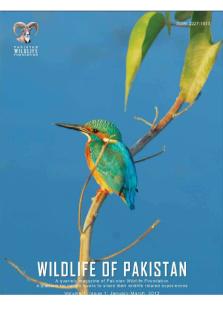
Wildlife of Pakistan Mar 2012
- 62 Pages

Wildlife of odisha
- 26 Pages
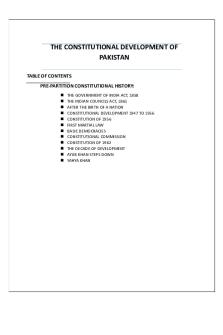
Constitutional History of pakistan
- 16 Pages
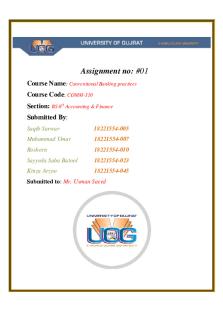
25 Banks of PAKISTAN
- 25 Pages
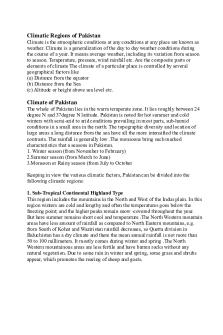
Climatic Regions of Pakistan
- 2 Pages
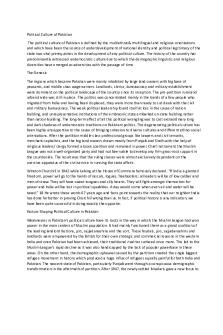
Political culture of Pakistan
- 11 Pages
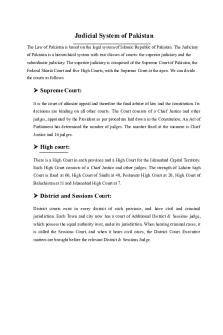
Judicial System of Pakistan
- 2 Pages
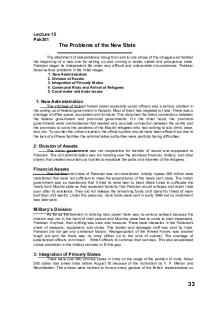
01 Early Problems of Pakistan
- 2 Pages
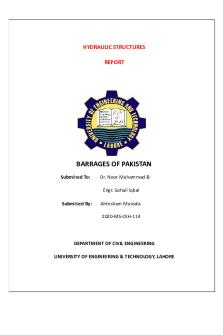
Barrages of Pakistan detail study
- 17 Pages
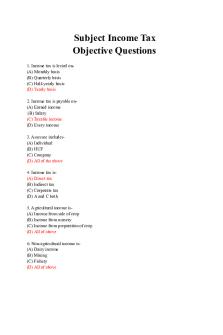
MCQs of Income Tax Pakistan
- 10 Pages
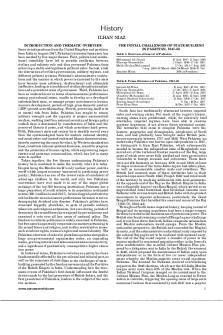
History Of Pakistan 1947-2017
- 15 Pages

History (Of Pakistan, 1947-2019)
- 16 Pages
Popular Institutions
- Tinajero National High School - Annex
- Politeknik Caltex Riau
- Yokohama City University
- SGT University
- University of Al-Qadisiyah
- Divine Word College of Vigan
- Techniek College Rotterdam
- Universidade de Santiago
- Universiti Teknologi MARA Cawangan Johor Kampus Pasir Gudang
- Poltekkes Kemenkes Yogyakarta
- Baguio City National High School
- Colegio san marcos
- preparatoria uno
- Centro de Bachillerato Tecnológico Industrial y de Servicios No. 107
- Dalian Maritime University
- Quang Trung Secondary School
- Colegio Tecnológico en Informática
- Corporación Regional de Educación Superior
- Grupo CEDVA
- Dar Al Uloom University
- Centro de Estudios Preuniversitarios de la Universidad Nacional de Ingeniería
- 上智大学
- Aakash International School, Nuna Majara
- San Felipe Neri Catholic School
- Kang Chiao International School - New Taipei City
- Misamis Occidental National High School
- Institución Educativa Escuela Normal Juan Ladrilleros
- Kolehiyo ng Pantukan
- Batanes State College
- Instituto Continental
- Sekolah Menengah Kejuruan Kesehatan Kaltara (Tarakan)
- Colegio de La Inmaculada Concepcion - Cebu


